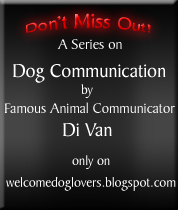Selective Breeding and Its Severe Adverse Effects on Dogs
Human intervention in animal breeding has done bad alongside good to species.
Humans have been striving hard to have specific characteristics (of human interest) in plants and animals, thereby setting a goal to produce offspring, inheriting specific traits. Selective breeding procedure have been in the scene for several hundreds of years now. Humans have been taking very strategic actions, with knowledge of science in framing breeding programs that help both plants and animals to achieve adaptability (as desired by humans).
Selective breeding has definitely come as a blessing to the planet in many fronts. Selective breeding has helped to discard many health disorders. It has tremendously helped in refining a species or a breed. Moreover, we can get more fruits and crops, cattle can produce more milk, sheep can produce more wool and so on...
However, on the other level, human intervention in animal breeding has done and has been constantly doing massive harms. Some of the most significant adverse effects on dogs
1) Animals are restricted to evolve naturally (for human interest), which is against the law of nature!
Selective breeding programs have hugely impaired to the natural evolutionary processes. With a goal, in mind, to produce offspring with specific traits and to contribute to the adaptability, humans are trying to take Nature's responsibilities in his own hands. Animals are losing their natural adaptability in a gradually manner, which is certainly due to genetic loss! And that's a permanent loss.
Many people who wonder why stray dogs are more hardy and more adaptable to atmospheric and environmental changes than their pure breed counter parts, should get their answer here!
2) Selective Breeding Programs Have Exposed Dogs to The Risks Being Inbred
Purebred dogs often times come from the same small group of ancestral lines. This allows the coefficient of inbreeding to shoot up eventually generation by generation. This means the measurement of consanguinity index (that are found in the dogs based on their overall pedigrees) becomes little higher generation after generation with selective breeding programs that are designed to push the desirable traits.
Higher the index of consanguinity, closeness is the relationship.
Many so-called breeders forget that they are working with life. Most often they select breeding partners that have a great specimens present in the 3rd, 4th or 5th generation of both breeding partners, in order to get the desirable traits. The desirable traits are flown in, along with certain issues as well. Identifying the common ancestors is of immense importance.
Screenshot of a paper (authored by Department of Epidemiology and Public Health, Imperial College, London and The Kennel Club, London) published in National Center for Biotechnology Information (NCBI)
3. Selective Breeding Generates Possibility of "Popular Sire Syndrome"
Many of you may be new to this phrase - "Popular Sire Syndrome". Popular Sire Syndrome happens when a particular stud is being overly and widely used for a particular trait of a particular set of traits. If too many breeders are looking for particular trait(s), then there will be too many breeding requests for a specific stud. Too much of genetic materials being shared for a particular trait that a large community of breeders are running behind. This has a positive effect, because good traits are being passed on to generations. But in the long run there will certainly be severe adverse effects as there will be a noticeable depression in genetically strong population of any breed of dogs. Sooner or later the index of consanguinity will rise exponentially, and that will mark the start of breed extinction.
I guess the victimized breeds are German Shepherds, Dobermans, Boxers, Labradors, Golden Retrievers, Rottweilers, Bullmastiffs etc. because these are some of the most popular breeds that have been making money for breeders (both knowledgeable breeders and puppy millers).
4) No Body Can Ensure That The Positive Traits Will Be Passed On to Next Generation
There's no way to ensure that the offspring from a particular selective breeding will bear the traits that the breeder is looking for, until the breeding partners bear "exactly same" genetic profile that the breeder wants to see in the next generation. There's only one parent with the desired trait and hence there's not more than 50% (or even as low as 25% in some offspring) probability that the offspring will bear the trait desired. However dominant the stud may be, there will always be a chance that the offspring be seen with entirely different traits than the sire and dam. There may also be some probability that offspring instead of bearing desirable traits, may exhibit better traits that in future may be considered as more desirable!
Most often breeders who have invested hugely in dog breeding business, comes up with guarantee about specific traits. Outcome of a breeding at the end of the day is the Nature's decision!
Breeders Boasting at Linebreeding Programs
It is most important to understand that Linebreeding programs are also exposed to the similar risks as Inbreeding programs. While inbreeding involves breeding partners that are genetically related, linebreeding involves partners that are genetically related - but more distantly. Breeders who talk about the disadvantages of inbreeding, and line-breed their dogs should know that Linebreeding Is Also a Type Of Inbreeding That Involves Breeding Partners That Are Genetically "Distantly" Related.
























0 comments:
Post a Comment